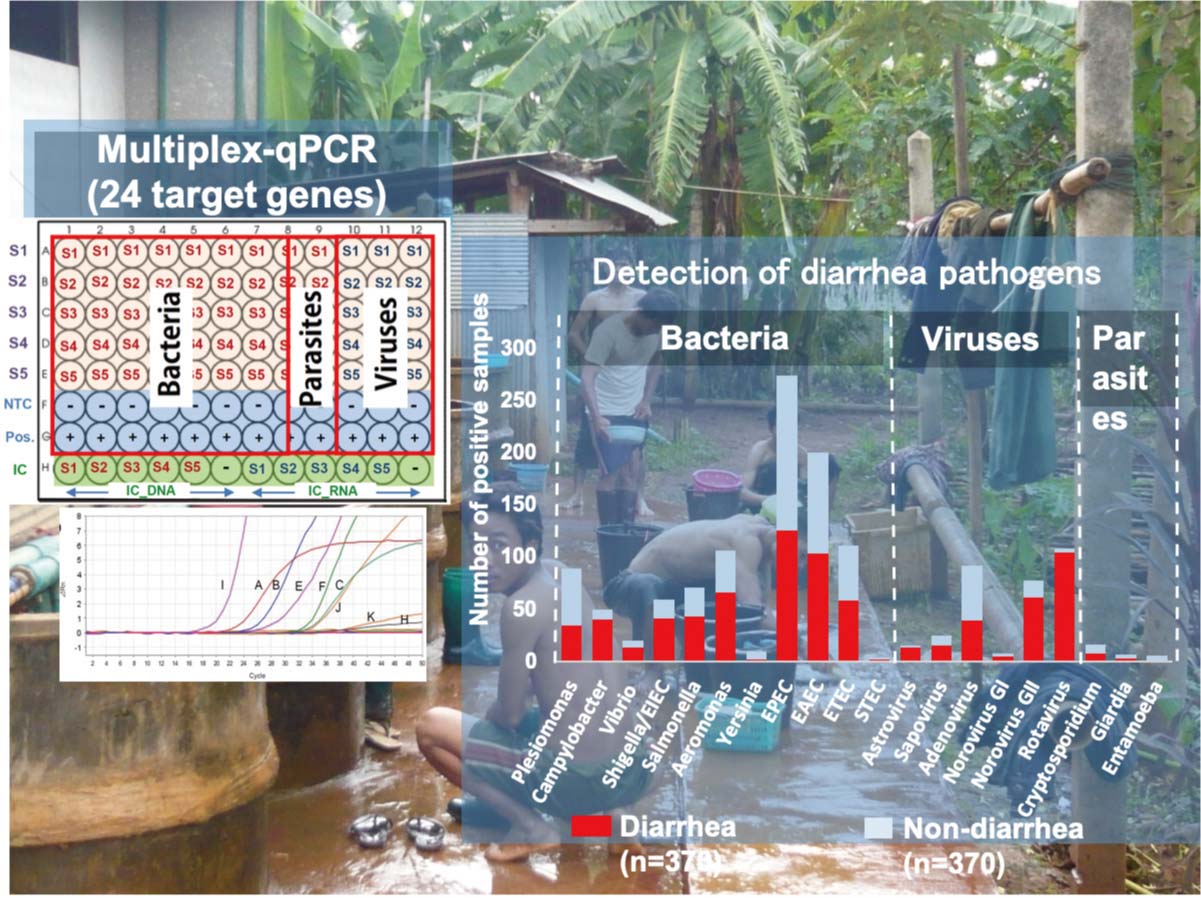Section of Bacterial Infections
Enteric infectious diseases caused by various microbes occur frequently in Thailand. However, there are no large-scale epidemiological studies of the etiology of gastroenteritis in Thailand. In the Section of Bacterial Infections, we are trying to develop effective diagnostic tools to detect bacterial pathogens and devise measures to prevent enteric infections, including those mediated by Vibrio cholerae O1.
We collect and analyze fecal specimens from patients with severe diarrhea admitted to leading hospitals located in different parts of Thailand. We then try to detect specific pathogens by real-time PCR analysis of bacterial genes and culture analysis. We also attempt to identify unknown pathogens using TOF-MS or NGS. In cases of cholera in Thailand or Myanmar, we will co-operate with governmental authorities to analyze V. cholerae isolates to elucidate the route of transmission. We will also undertake molecular and/or genomic characterization of any identified pathogen. Our research goals are to develop methods for rapid diagnosis and to prepare countermeasures against what is still a challenging pathogen.
Staff
| Prof. | Tetsuya Iida (concur.) |
|---|---|
| SA Assoc.Prof. | Kazuhisa Okada |
Publication
- Etiologic features of diarrheagenic microbes in stool specimens from patients with acute diarrhea in Thailand. Okada K. et al., Sci. Rep. (2020) 10:4009.
- Simultaneous detection and quantification of 19 diarrhea-related pathogens with a quantitative real-time PCR panel assay. Wongboot W. et al., J Microbiol Methods. (2018) 151:76-82
- Vibrio cholerae embraces two major evolutionary traits as revealed by targeted gene sequencing. Okada K., et al., Sci. Rep. (2018) 8(1):1631
- Characterization of 3 Megabase-Sized Circular Replicons from Vibrio cholerae. Okada K., et al., Emerg Infect Dis. (2015) 21(7):1262-3.
- Cholera in Yangon, Myanmar, 2012-2013. Aung WW., et al., Emerg Infect Dis. (2015) 21(3):543-4.
- Vibrio cholerae O1 isolate with novel genetic background, Thailand–Myanmar. Okada K., et al., Emerg Infect Dis. (2013) 19:1015-7.
